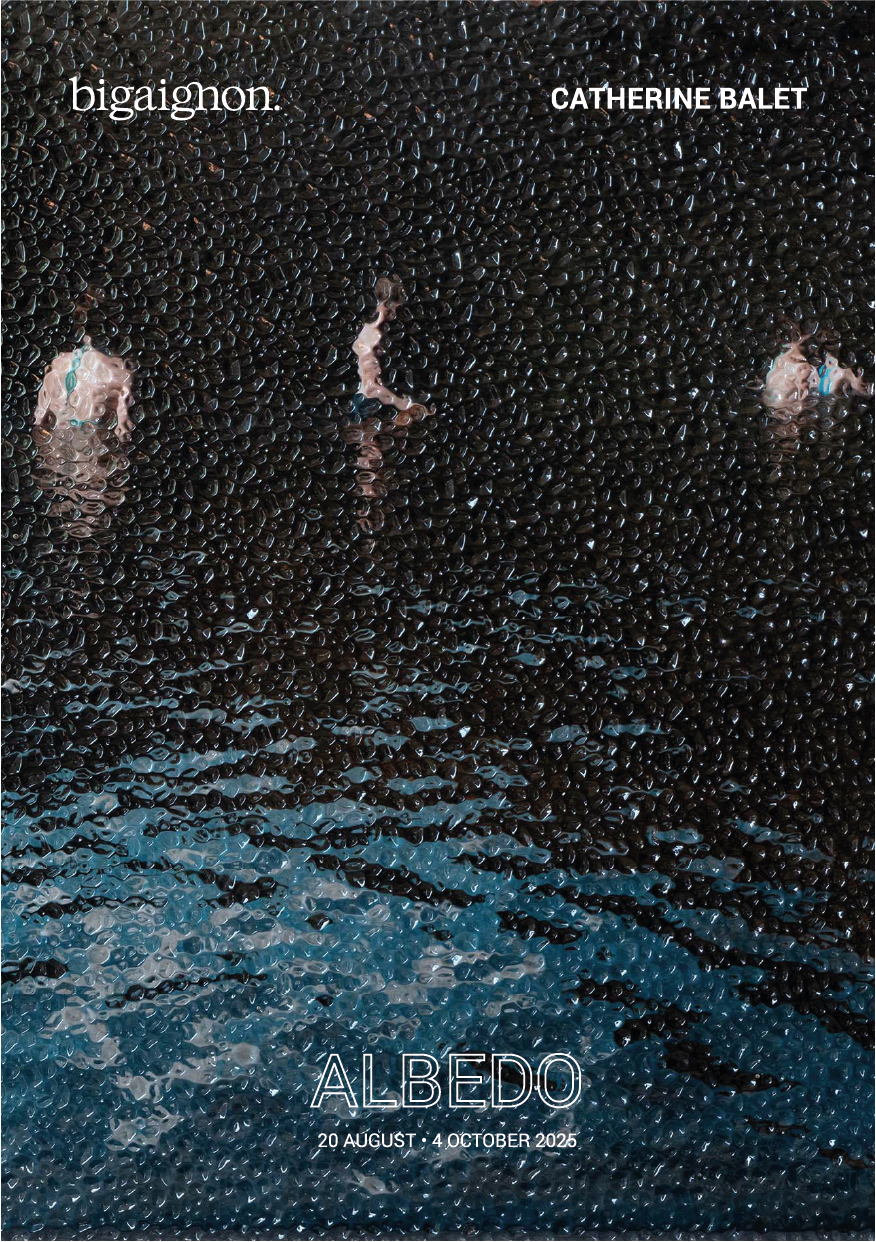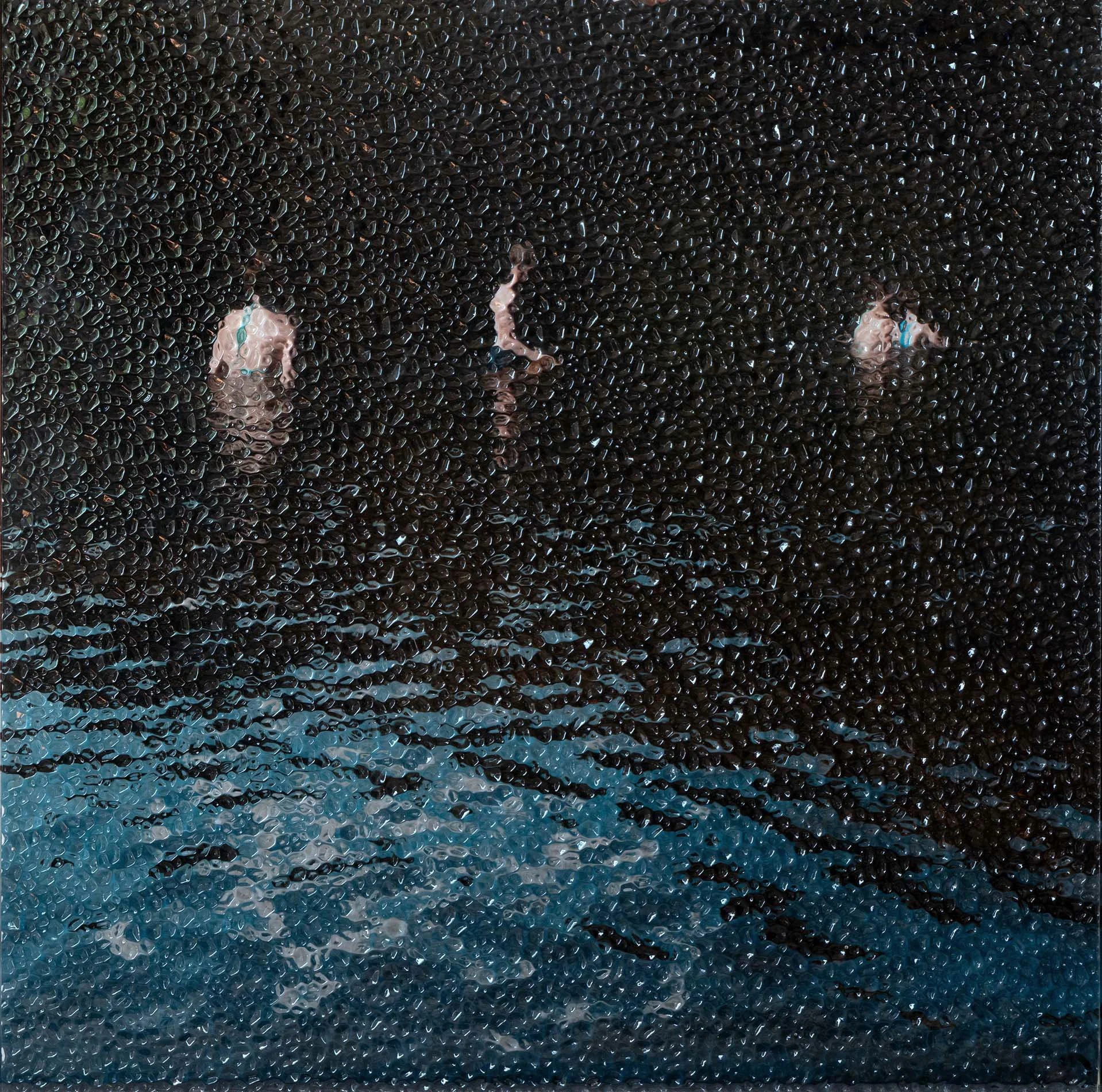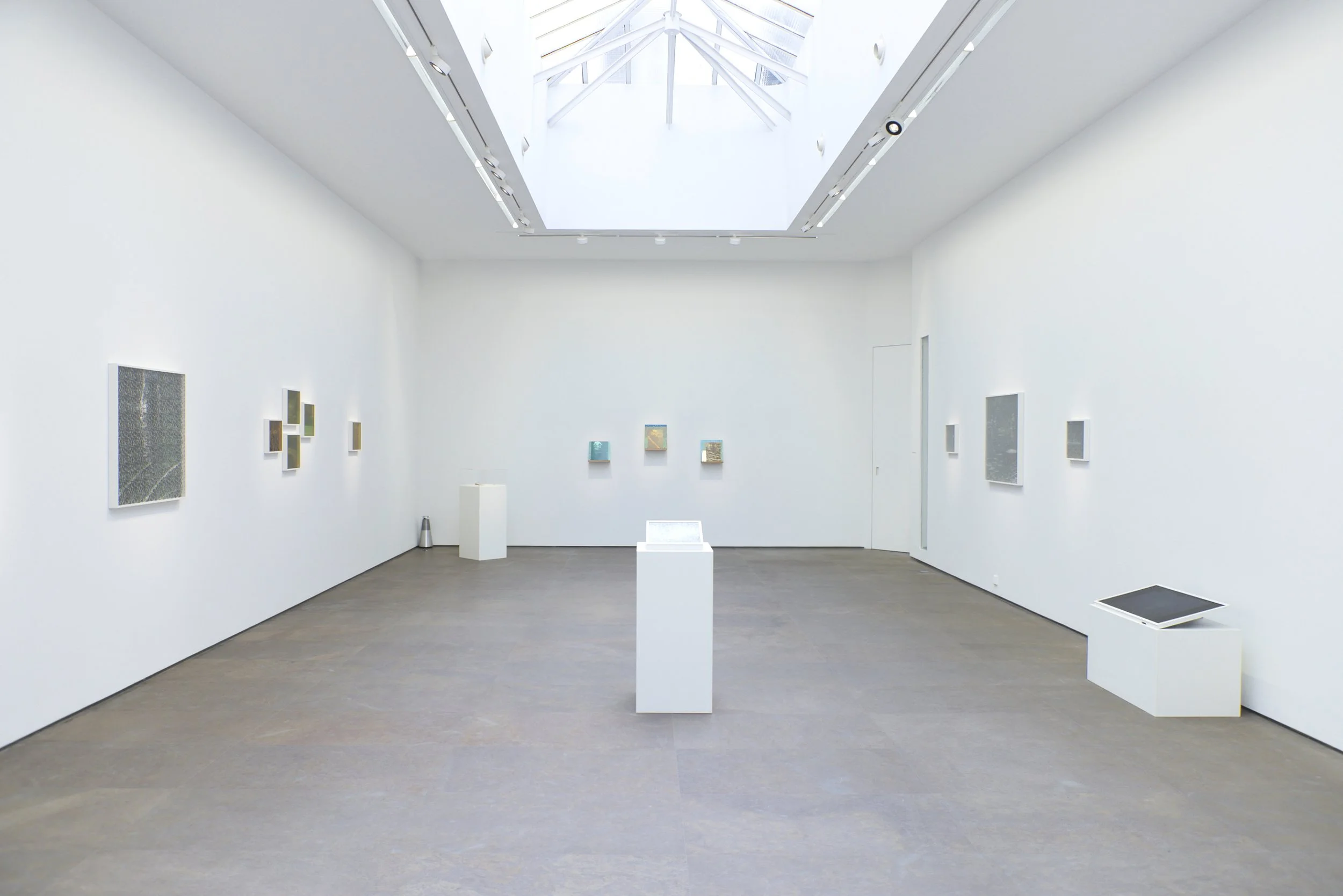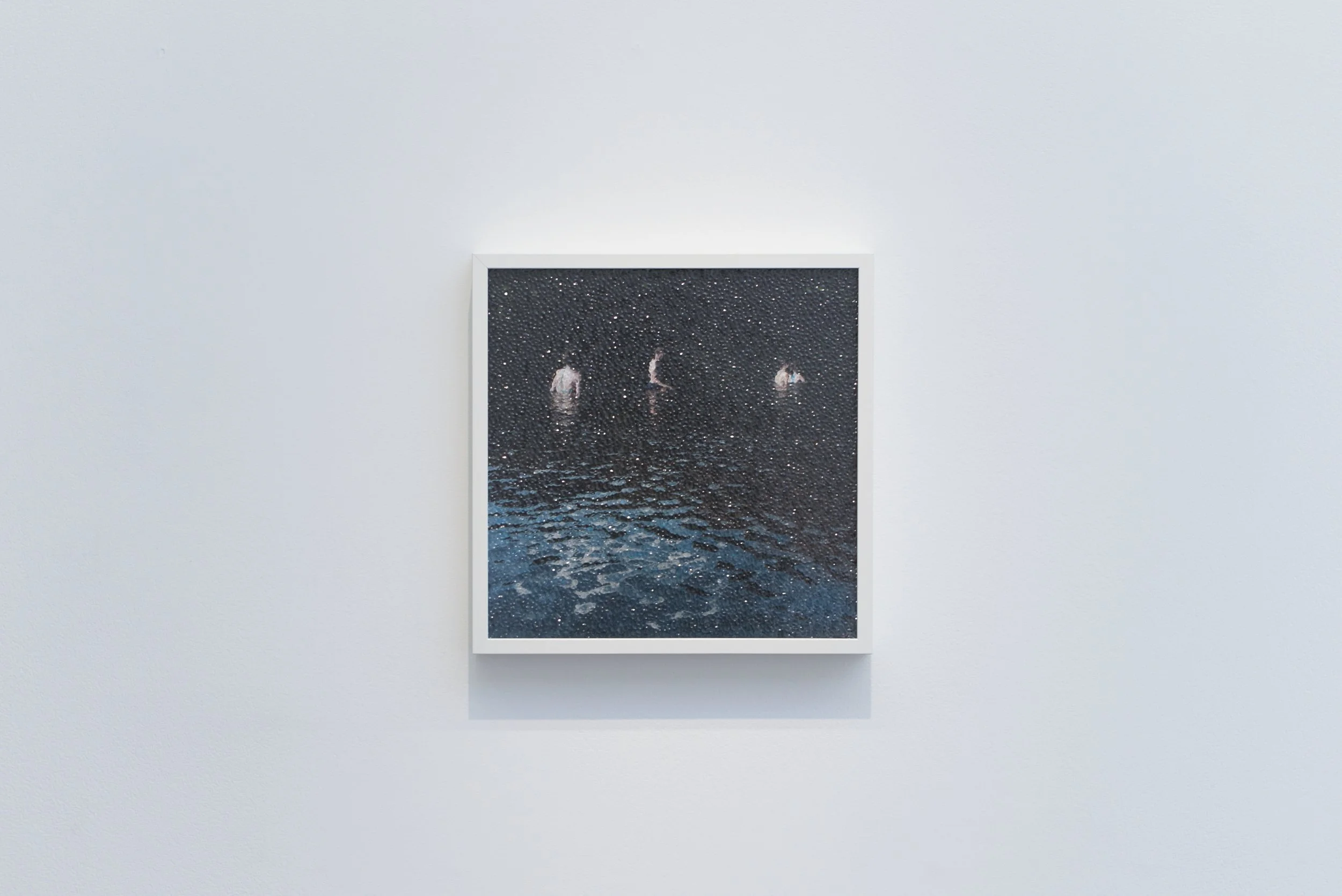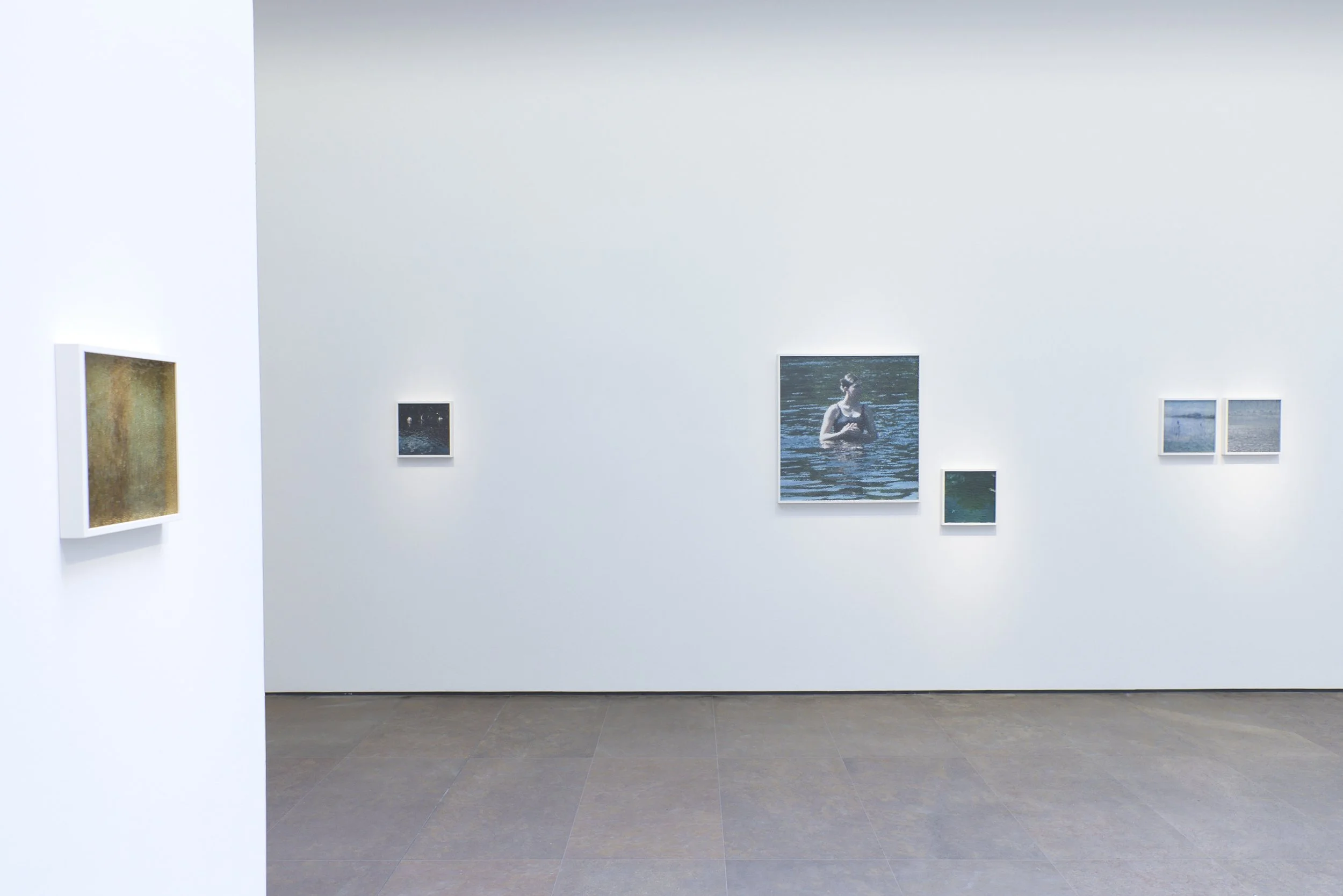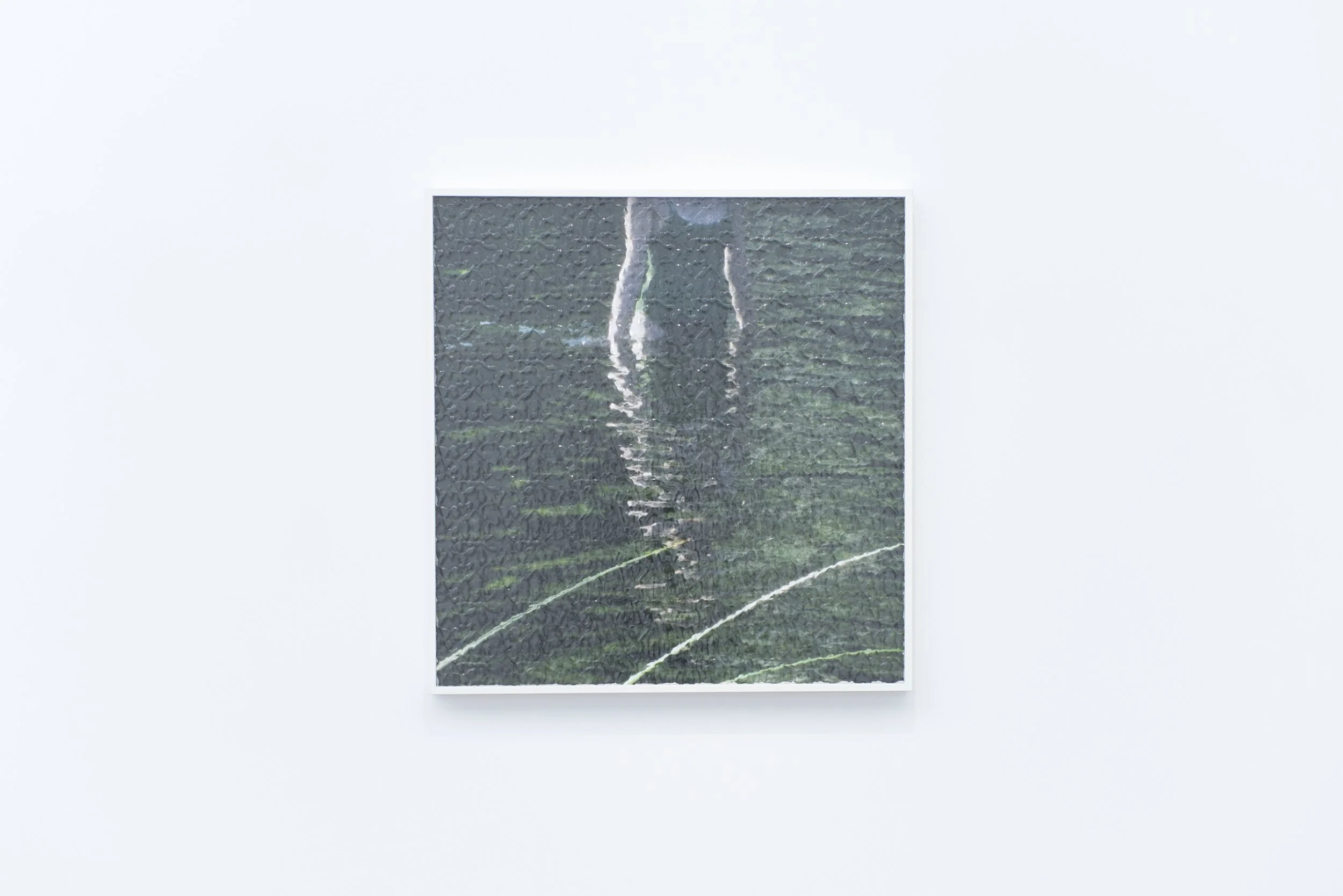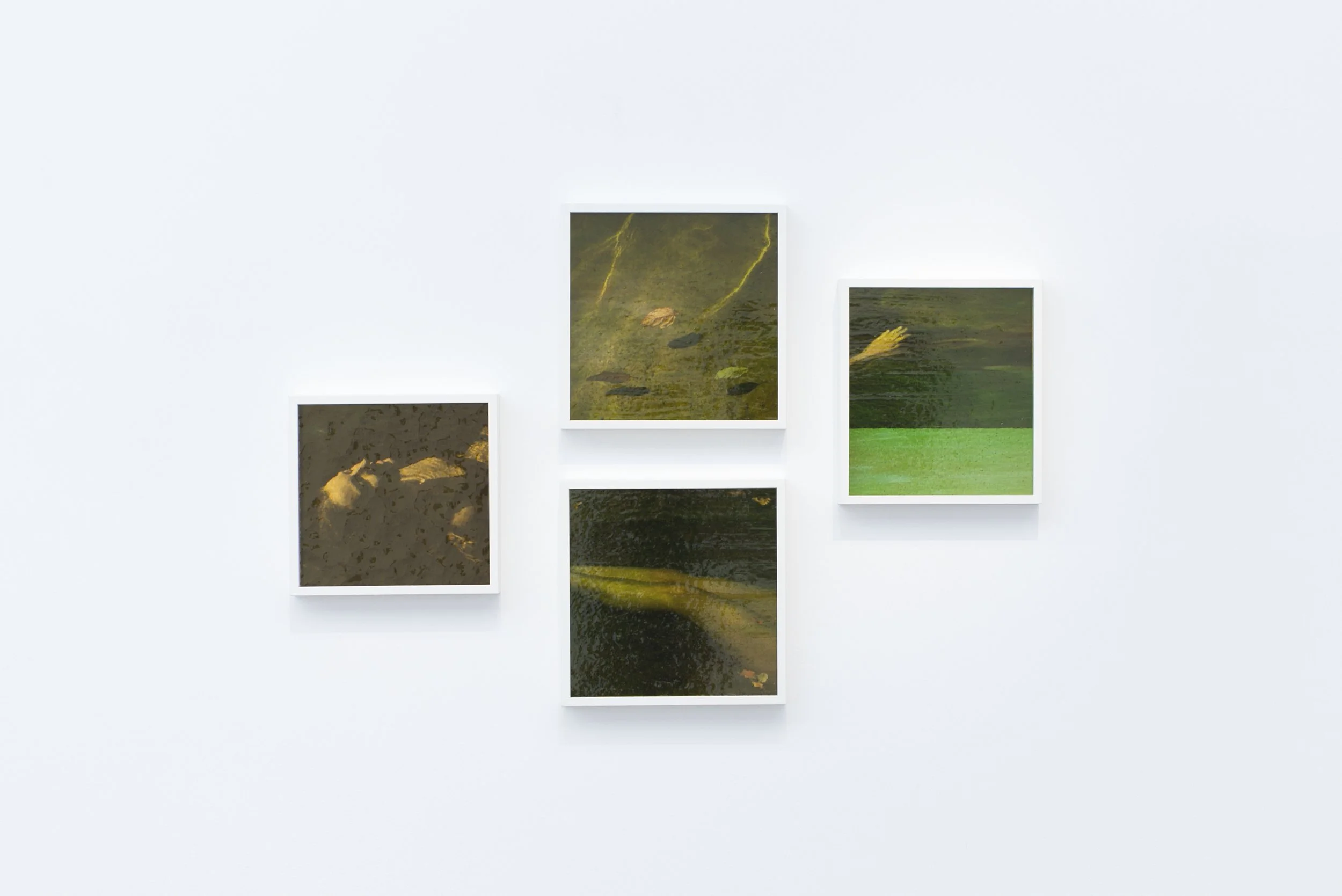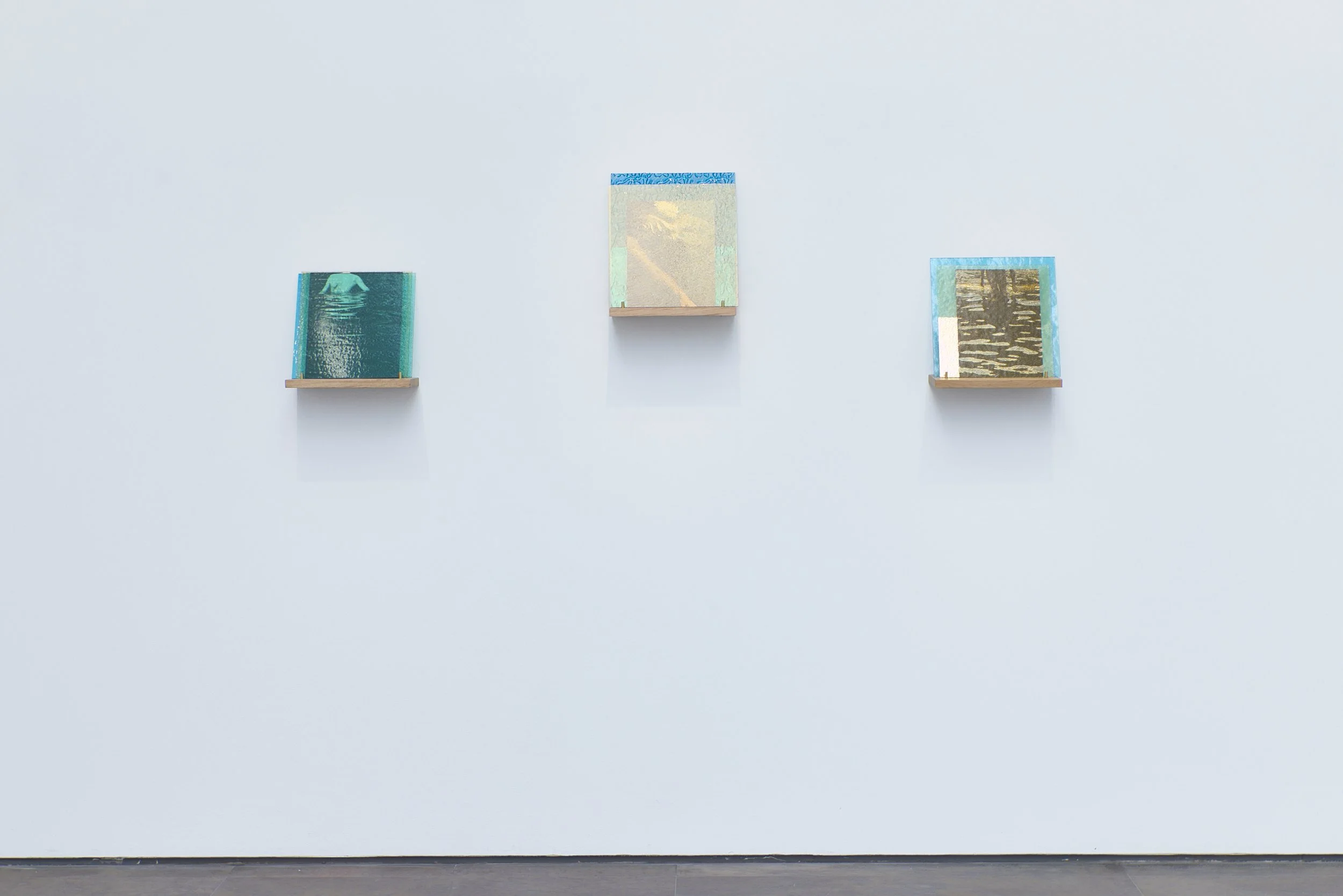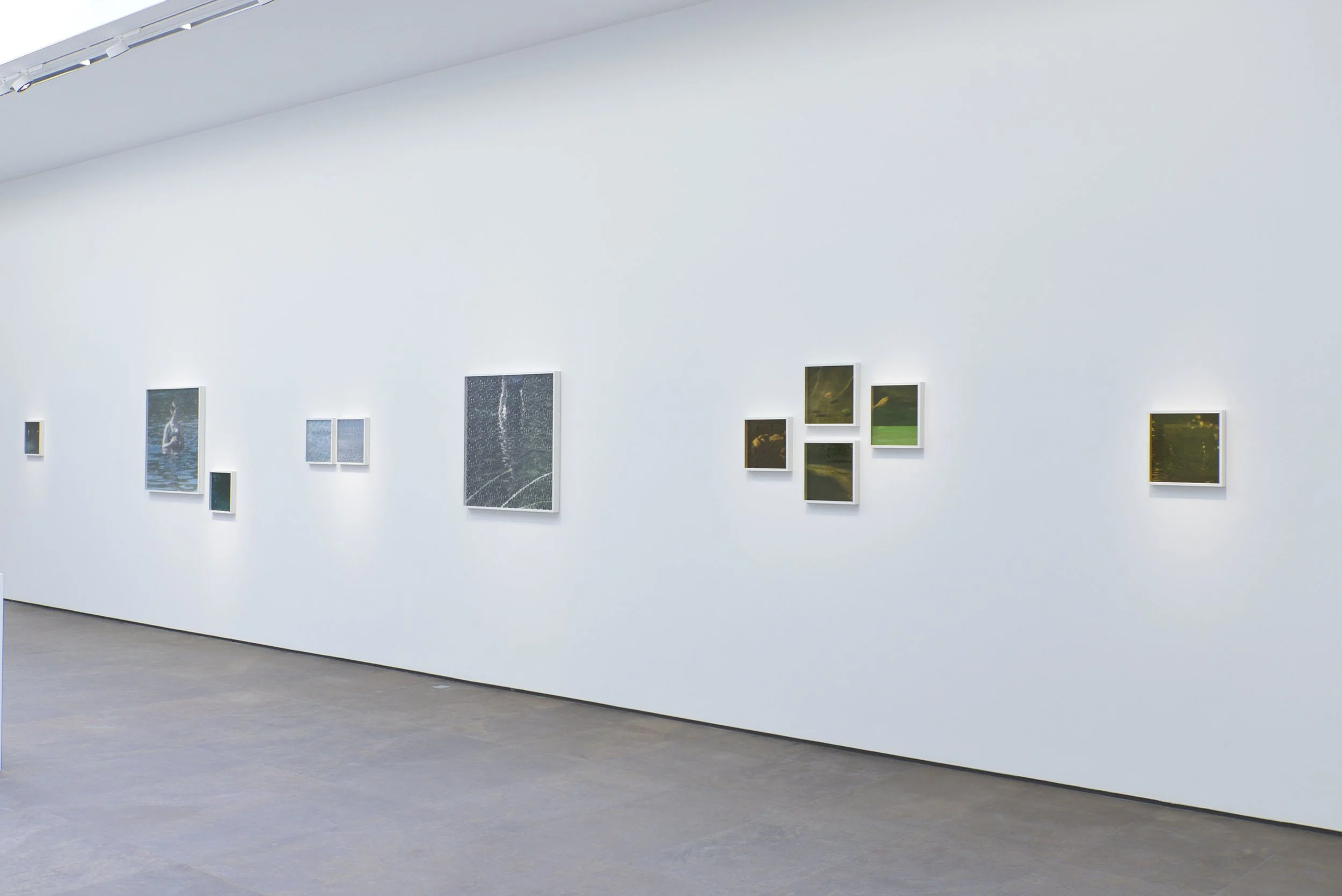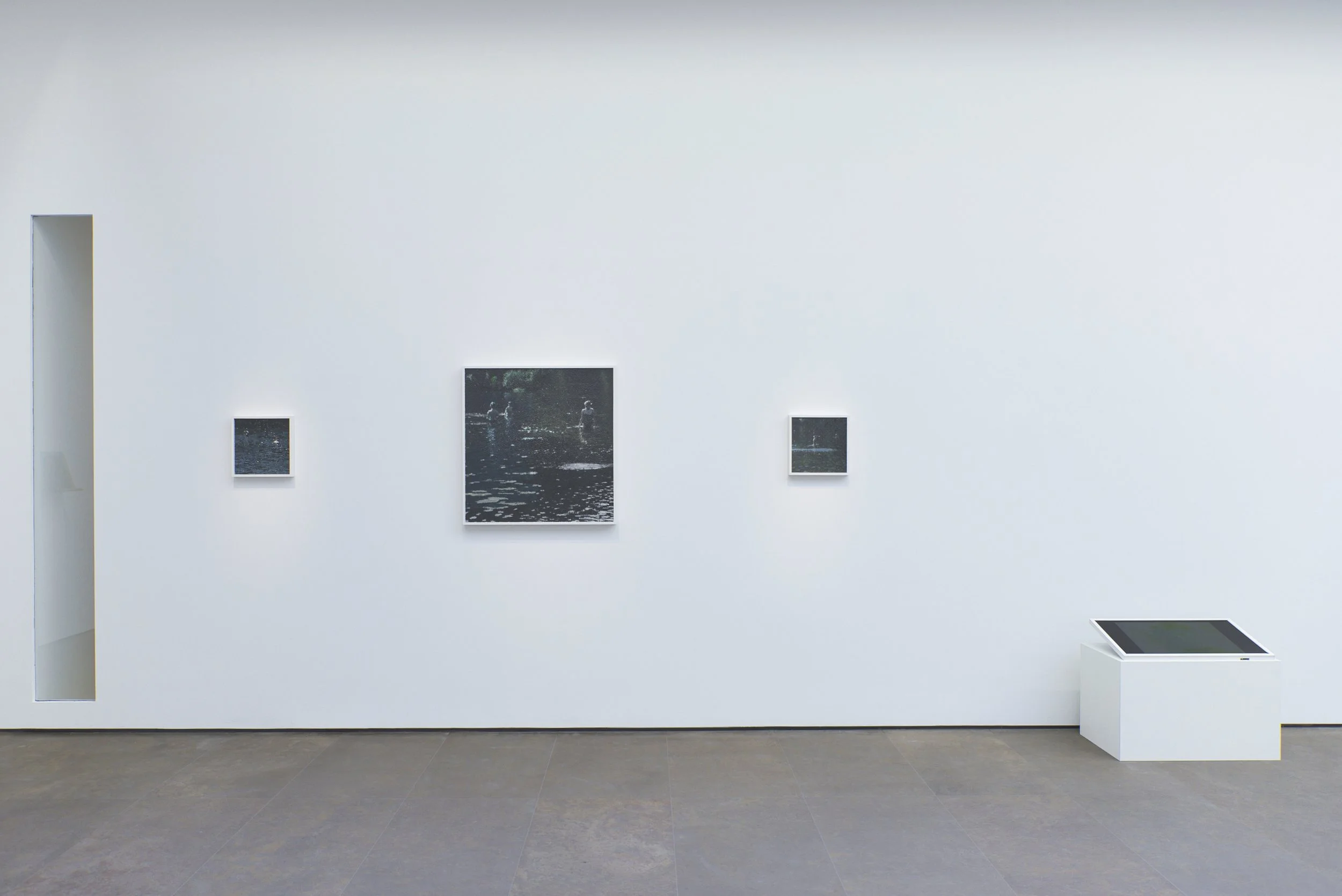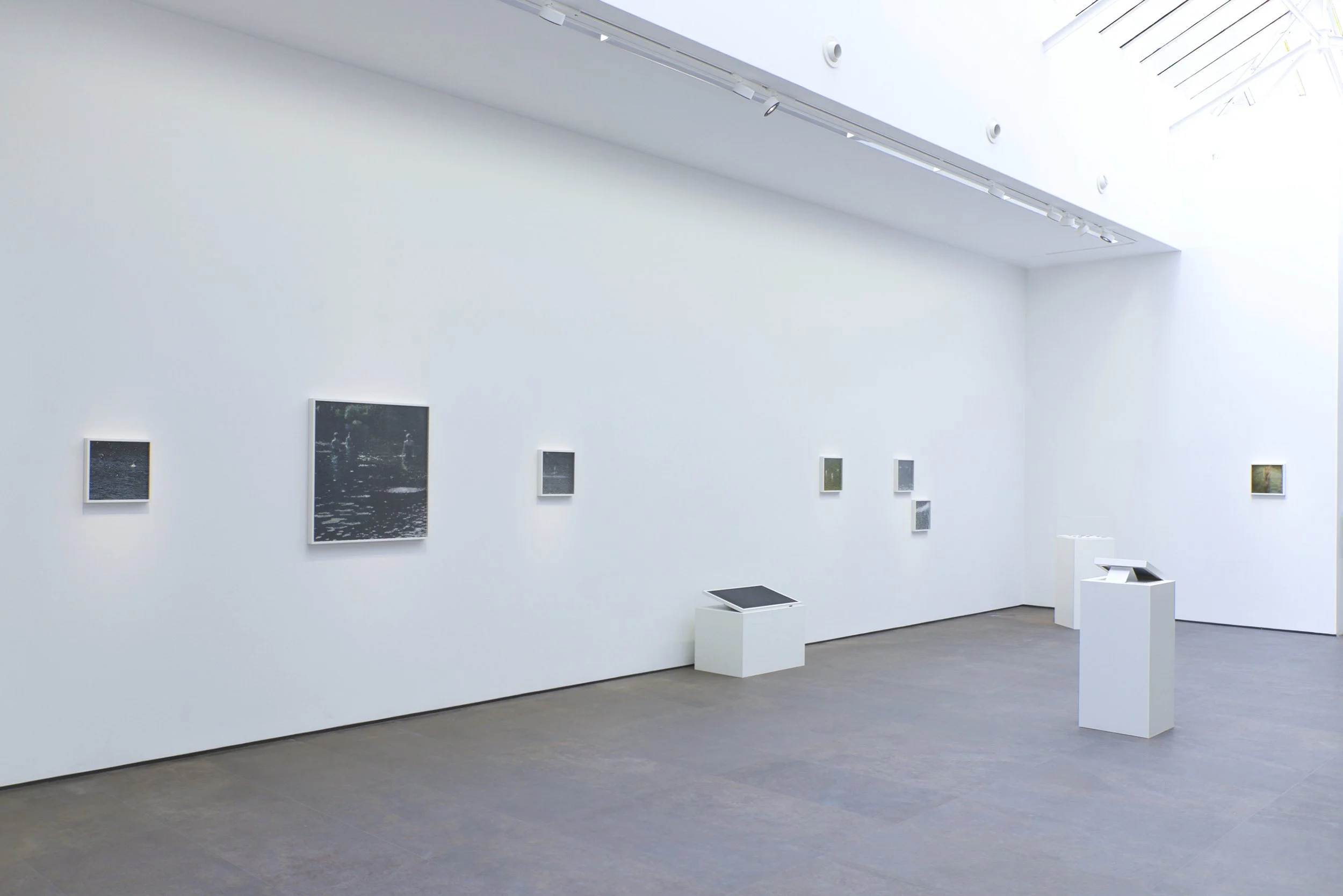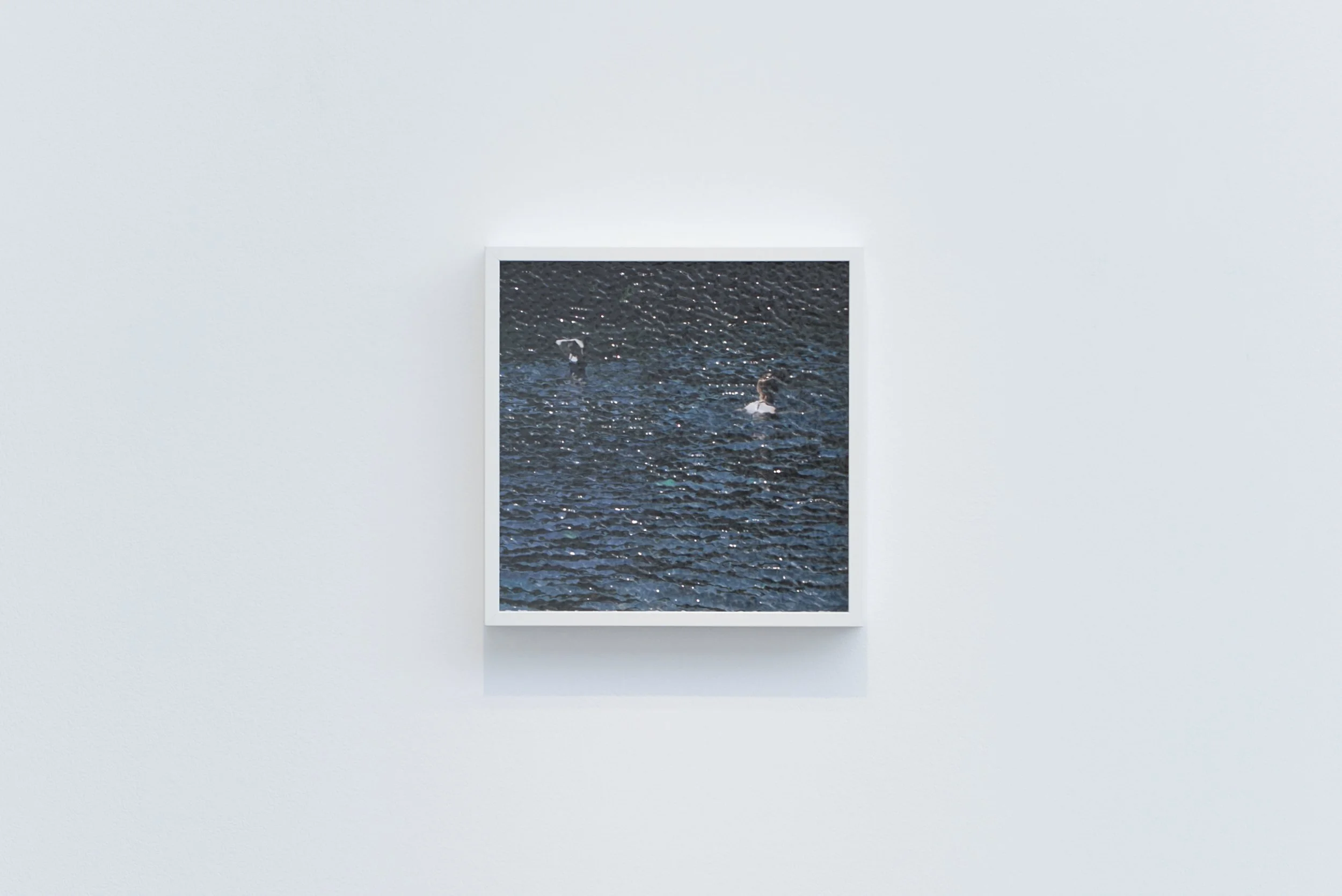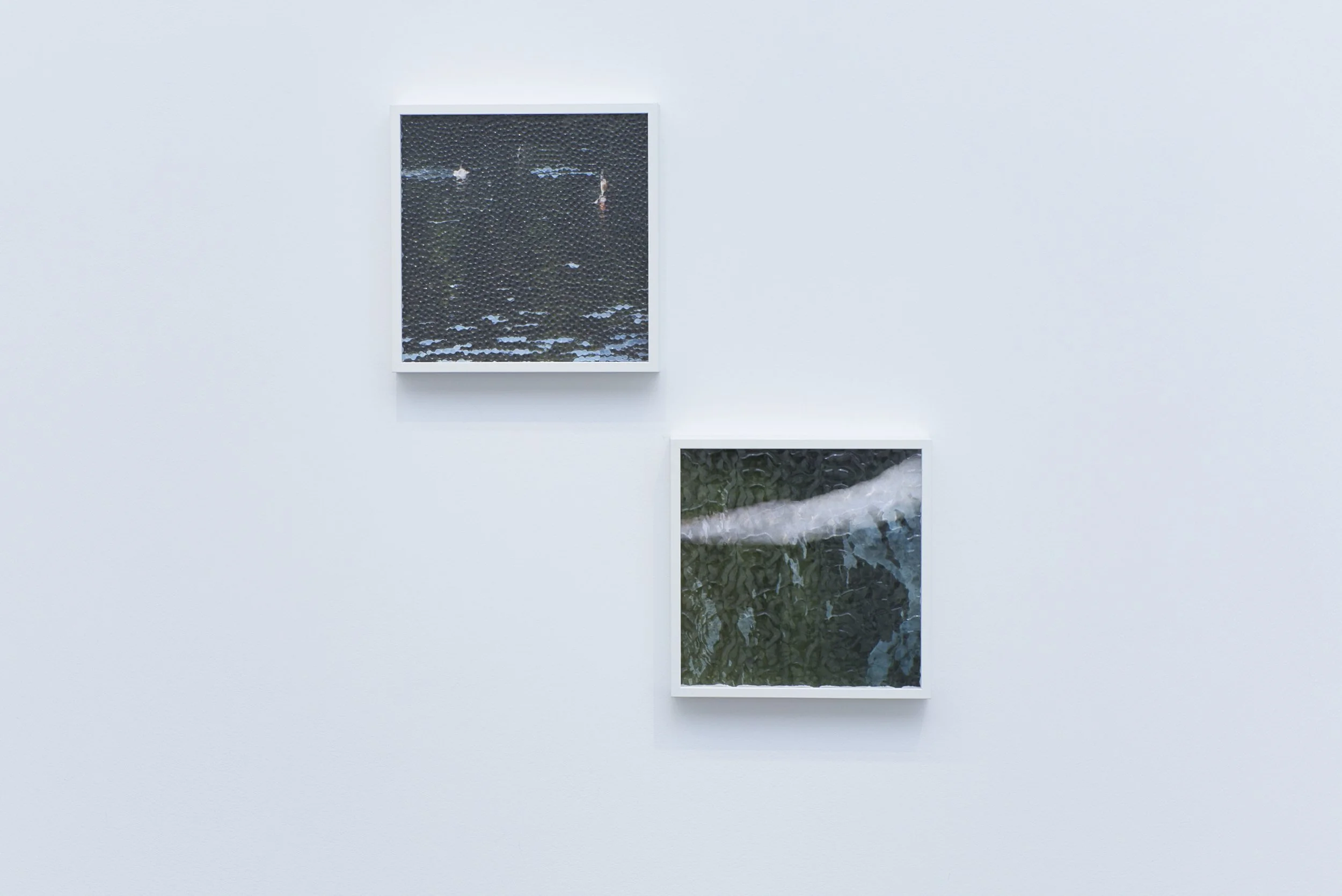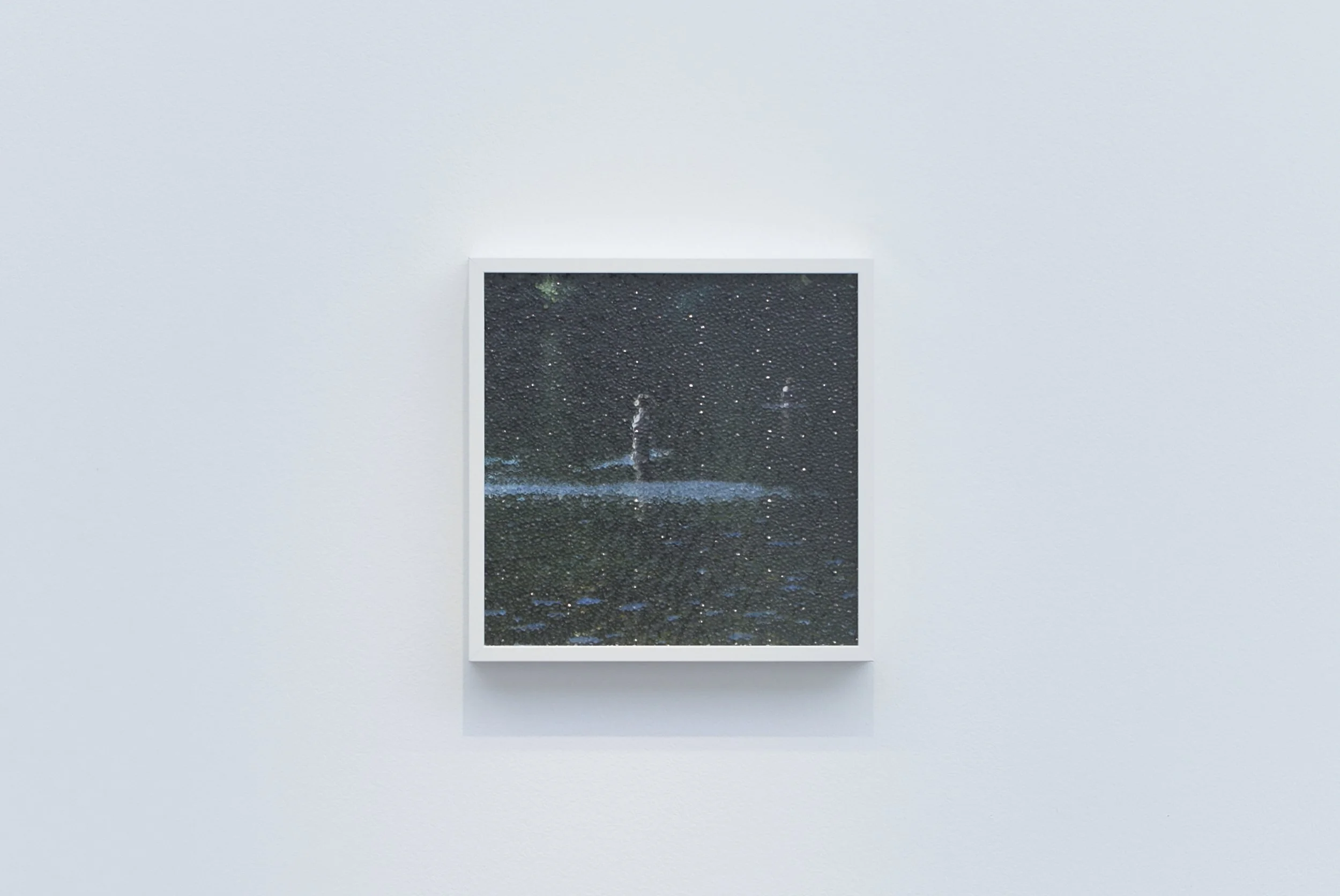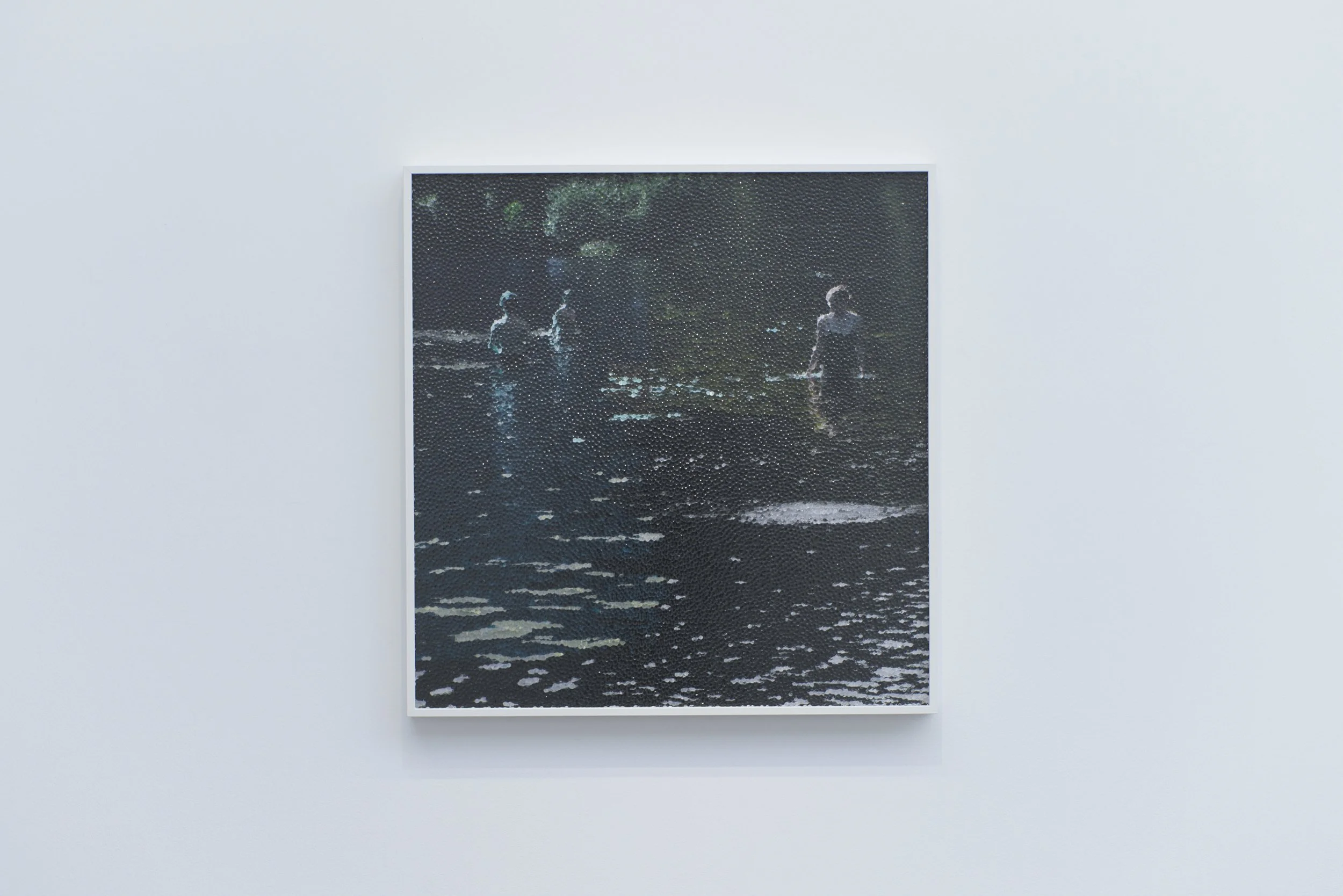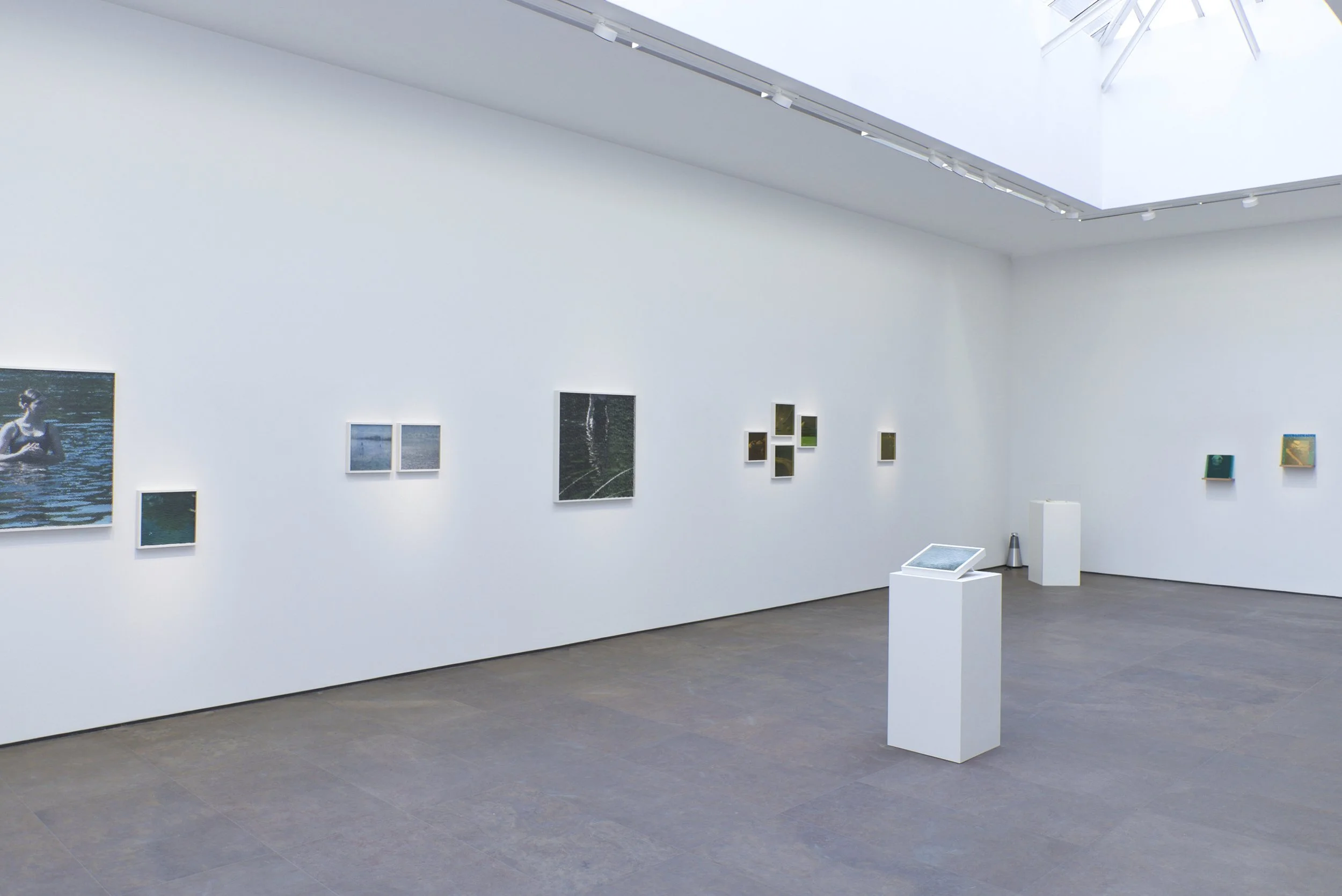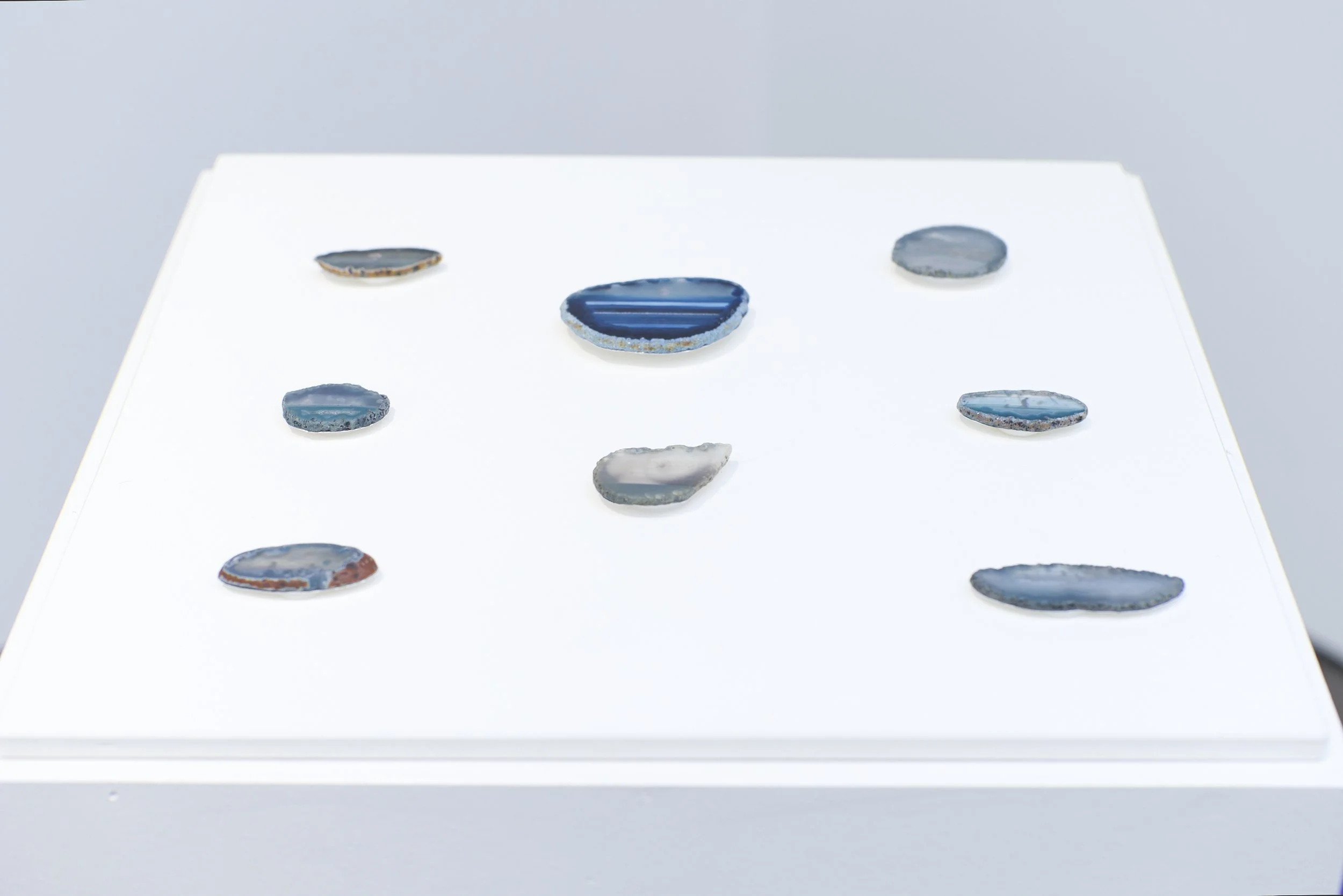CATHERINE BALET • ALBEDO
SPECIAL PREVIEW FROM 20 AUGUST 2025
OPENING: SATURDAY 6 SEPTEMBER 2025 (3-8PM)
EXHIBITION FROM 20 AUGUST TO 4 OCTOBER 2025
We are pleased to present Catherine Balet’s fourth solo exhibition at the gallery. Entitled Albedo, this series explores the intimate and essential relationship between water and light—elements that are both physical and symbolic.
The term albedo refers to the ratio between the light received by a surface and the amount it reflects. This scientific concept becomes, here, a poetic metaphor, expressing the shifting dialogue between matter, energy, and perception.
For this series, Catherine Balet overlays her photographs with textured glass, capturing the distortions produced by the interaction of light and water. The undulating movement of the current draws unpredictable geometric shapes across the surface. Far from being a mere protective layer, the glass acts as a living membrane, enhancing the image through its direct interplay with light.
Each scene—fragmented bodies, moments of bathing—is seen through this changing prism, where reflections become a visual language, an essential component of the work. The glass, inspired by stained-glass techniques, offers a palette of textures and nuances that diffract the light, making it shimmer depending on the angle of view, deconstructing the photographic image to reveal a new visual and sensory dimension in which bodies seem to dissolve and reassemble.
Albedo also evokes the light reflected by submerged bodies, echoing an ancestral, almost sacred, connection between humans and water. When a body enters water, there is a fragile tension between the skin of the water and human skin—a moment of transition, of fusion, of return to the element. These images convey the sensory experience of a floating body, suspended, drifting in contemplative stillness and a form of intimate reverence.
The light dancing across the glass surface recalls the vibrant brushstrokes of the Impressionist painters, who also sought to capture this fleeting interplay between light and water. One thinks of Monet and his Water Lilies, where water becomes mirror, painterly surface, and pure abstraction; of Renoir and his bathers bathed in warm light; of Sisley and his shimmering river reflections; of Pissarro, observing atmospheric variations over canals; or of Berthe Morisot, whose water scenes combine delicate linework with the evanescence of light. In the background also lingers the memory of Seurat’s bathers, that serene humanity suspended in time.
Through this body of work, Catherine Balet extends and reinvents this painterly tradition, transposing it into a photographic medium where light, water, and glass become the agents of a shared visual alchemy.

